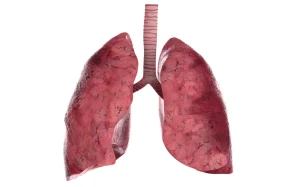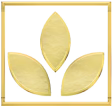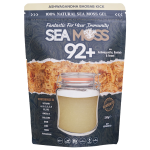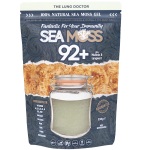LUNGS
LUNGS

What are the lungs?
The lungs are a pair of sponge-like, cone-shaped organs located in the chest cavity, also known as the thorax. The lungs play a vital role in the exchange of oxygen and carbon dioxide in the body, as they inhale oxygen and exhale carbon dioxide.
The lungs are divided into lobes: the right lung has three lobes, while the left lung has two lobes to accommodate space for the heart. Within the lungs are bronchial tubes that branch out like a tree, progressively getting smaller and leading to tiny air sacs called alveoli.
The lungs are a part of the respiratory system that is divided into the lower and upper respiratory tract. The lower respiratory tract consist of the alveoli, bronchi, bronchioles, and lungs, while the upper respiratory system includes the nose, nasal cavity, throat (pharynx and larynx), and trachea.
These structures work together to facilitate the process of respiration, which involves the intake of oxygen and the removal of carbon dioxide from the body. The respiratory system also includes the diaphragm, a dome-shaped muscle that aids in breathing by contracting and relaxing to create changes in lung volume.
The lungs are responsible for removing gases from the body such as carbon dioxide and, in turn, the lungs capture oxygen from the air so that it can be used by the body's cells.
This gas exchange occurs between 12 to 20 times per minute and is carried out in conjunction with other parts of the respiratory system. These organs also help regulate the body's pH balance, filter out small blood clots, and participate in the immune response by producing certain immune cells and substances.
The lungs themselves are the primary organs of the respiratory system. However, they are composed of various structures that work together to facilitate respiration:
- Bronchi: The trachea ends in the branching of two tubes or passages known as bronchi. There are two bronchi, one leading to the right lung and the other leading to the left. Inside the lung they further divide into smaller tubes called bronchioles.
- Bronchioles: These are smaller airways that branch out from the bronchi and extend into the lung tissue. They continue to divide into even smaller tubes called terminal bronchioles.
- Alveoli: When air passes through the bronchioles, it reaches small air sacs known as alveoli. These are found at each end of the grape-like bronchioles and are the structures that will ultimately allow air to pass into the body. The alveoli are filled with blood vessels that receive air through the alveolar membranes and the blood, distributing oxygen to the rest of the body.
- Epithelium: Epithelium is a type of tissue that lines the surface of the respiratory tract. It serves as a protective barrier and helps in the absorption and secretion of substances.
- Capillaries: Surrounding the alveoli are numerous tiny blood vessels called capillaries. These capillaries carry deoxygenated blood from the pulmonary arteries and allow for the exchange of gases with the alveoli, where oxygen is picked up and carbon dioxide is released.
- Pleura: The lungs are protected by a thin, two-layered membrane called the pleura, which helps them expand and contract with each breath.
- Trachea: This structure receives air from the environment with each inhalation and expels carbon dioxide from the body with each exhalation.







